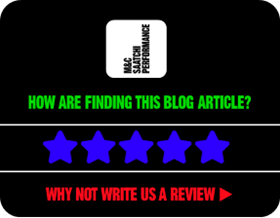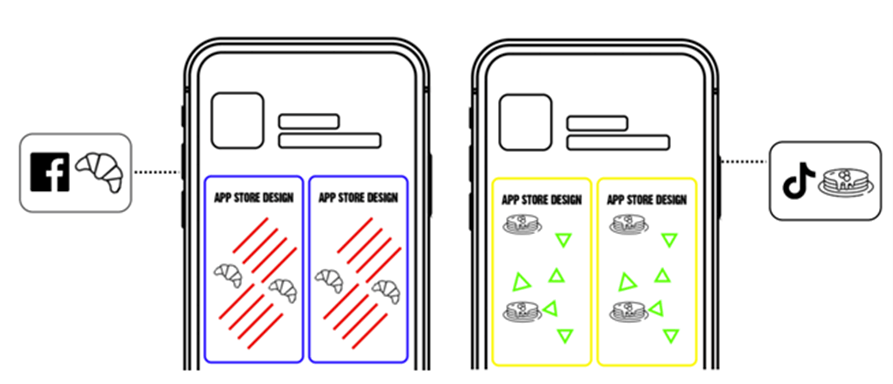What’s new in app store optimisation and how to perfect your storefront
Every year, we’ve seen the app store grow at an exponential rate, and with this a complete change in the landscape brands are operating their apps within. App stores are at the forefront of our mobile-centric world, making App Store Optimisation (ASO) more important than ever to enable marketers and brands to promote their products and engage target audiences.
Since 2016, global smartphone subscriptions have grown 70%, totalling an estimated 6bn users. This growth has been mirrored by the number of app downloads, with global app downloads reaching 230 billion in 2021. Human reliance on apps in day-to-day life has soared, with users spending 3.8 trillion hours on mobile devices last year.
Increased app availability has given users a greater choice during app exploration, creating a brutally competitive market. The growth in potential traffic means that every impression counts to stand out in a crowded space. With the app world-changing, app stores have had to adapt and evolve making understanding your ASO possibilities an essential part of digital performance.
The Expansion of Keyword Optimisation & Testing
Over the years, app stores have released various updates surrounding metadata and visuals, improving the standard app storefronts for users. Through upgraded search algorithms, more accurate results are discovered by users, finding better matching and higher quality apps. Keywords are the guiding light for these algorithms, making them essential to ASO. Words used in storefronts hugely impact organic search discovery and should be at the core of your strategy.

Introducing subtitles/short descriptions and metadata character counts forced apps to refine their storefronts to take advantage of these keyword opportunities and achieve their potential optimisation goal, ranking for terms most searched by target users and improving organic search discovery. While researching competitive industry keywords is important, it’s also vital to identify realistic keywords to enhance your initial visibility. As impressions or installations increase, keywords will gradually start to rank as well. With one client, our keyword optimisation saw an 89% increase in keywords where a client’s app appears in the top 10 search results, resulting in organic downloads from a keyword search increasing 10%.
As of 2021, developers can now natively A/B test within both consoles, with Apple’s Product Page Optimisation and Google’s Store Listing Experiments. This tests a range of creative assets, refining and optimising storefronts to maximise impressions and conversions, whilst reducing acquisition costs. Natively testing live within app stores will negate some issues of using third party testing, making user experience seamless by no longer being directed to a webpage mock-storefront as previously necessary. This caused many users to drop off, consequently requiring longer, more expensive tests to receive traffic levels required for a decisive result. Effective A/B testing can truly elevate a brand’s app, with our ASO team increasing organic conversion rates by up to 35%.
How do we do it?


Taking advantage of your Ratings & Reviews
We have seen many changes and innovations behind the curtain of developer consoles, with Apple and Google making strong improvements in developers’ app store capabilities, providing a multitude of data to better analyse and inform app listings. The notoriously fickle algorithms unpredictably affect ASO performance, however greater visibility within developer consoles enables a greater understanding of algorithmic effects.
With 79% of users checking ratings and reviews before making a decision to install, user feedback is vital for a brand’s ASO performance. As you’d expect, users are less likely to install a poorly rated app and vice versa, but the margins can be fine between a user deciding to install or not – climbing from a 2 to a 3 star app rating can uplift conversion by 300%. Similar to other experiential ratings, users are far more likely to leave punitive feedback if issues occur, than leaving positive feedback regarding satisfying experiences. In-app prompts allow developers to coax usually shy positive reviewers to bolster reviews and ratings, which can generate over 265% more reviews, improving an average of 1.4 stars.

Developers can delve deeper into feedback through sentiment analysis, by identifying bugs and other issues raised, flagging unjust feedback and even reply to reviews. Developers can have a huge impact on their ASO when responding, by either cementing a good review or even more crucially acknowledging and helping to solve a user’s problem. Through effectively responding to feedback users are more likely to change their initial feedback, meaning developers could boost their star rating by 0.7 stars.

Cutting through the App Store Noise
The last five years saw extraordinary industry growth, with an increasing library of over 5 million apps and consequently the need for ASO. With the ever-increasing importance of mobile-led marketing, it’s vital for brands to not only think about organic performance via app store optimisation, but to recognise the necessity for ASO and paid media cohesion.
This symbiotic relationship was evident when working with a client, where the first round of keyword optimisation saw positive organic rank improvements. Comparing this impact on paid performance of corresponding keywords, we observed a 21% reduction in the paid search CPIs. In the opposite trend, looking at how paid performance impacts organic, we bid on previously un-targeted keywords, measuring the impact on organic ranking, and discovered a significant positive improvement in organic.
Learning about new updates in the app store
There’s no better example of the synchronicity between paid and organic, than the introduction of Apple’s Custom Product Pages and Google’s updated Custom Store Listings in the last year. Developers can now create tailored storefronts, creating a personalised experience for users based on the channels and creative they’ve engaged with. This new feature requires optimal balancing of ASO, researching and perfecting storefronts, combined with paid media identifying and targeting optimal ad campaigns. Combined, brands can reach multiple user channels more effectively than ever before, with one of our US custom product page campaigns seeing a 49.9% lift in conversion rate and decreasing CPA by 83.3%.

The app store has been a constantly changing space with more focus from Google & Apple being placed on it in recent years. It can make or break the success of an app so there’s no surprise it’s had more investment focused on testing and personalisation of these areas. This article is just a taste of some of the best practices as well as new updates. To really succeed at ASO, you need consistent effort, resource, and attention on how you’re performing and how to improve.
To find out more about how we make this happen, get in touch with our team or download the guide below to get to grips with the basics.


